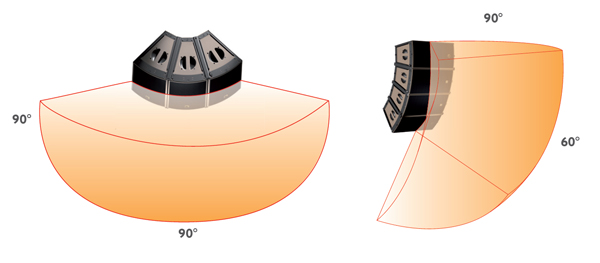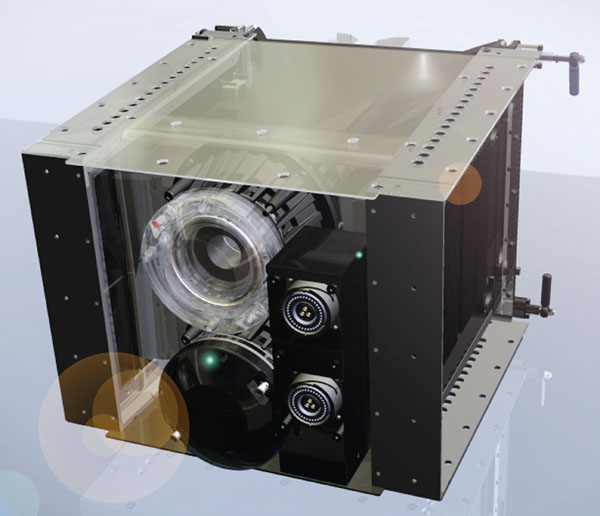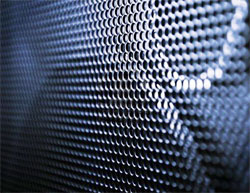
Making It Modular
Modularity is another primary category, adding to the palette of flexibility. While cabinets designed to work as both mains and floor monitors have been around for ages, trying to get a box to do well as both a stand-alone cabinet and as part of an array has been a hit-and-miss prospect.
NEXO has been an innovator in this regard, first with some of the GEO Series loudspeakers, and now it’s been taken to a new level with the new STM (Scale Through Modularity) system.
STM is comprised of four small, proportionally sized core modules (main, bass, sub and omni) that can be mixed and matched to put together “custom” arrays tailored for very small to very large applications.
Also developed for the STM Series are flat-membrane midrange transducers that allow the highs to expand uninterrupted into the waveguide, as well as a venting design in the STM 46 main module in which all radiating surfaces are in phase, helping to improve efficiency, frequency response and coverage.
Renkus-Heinz is well-known for it’s digitally steerable arrays such as Iconyx, IC Squared and IC Live systems, and before that, Complex Conic and CoEntrant topologies that advance beamwidth/directivity parameters.
Recently, R-H debuted Varia, a scalable, modular point-source array approach with three boxes offering 7.5-, 15- and 22.5-degree vertical dispersion, with the 22.5 modules also well-suited for tight-packed horizontal arrays.
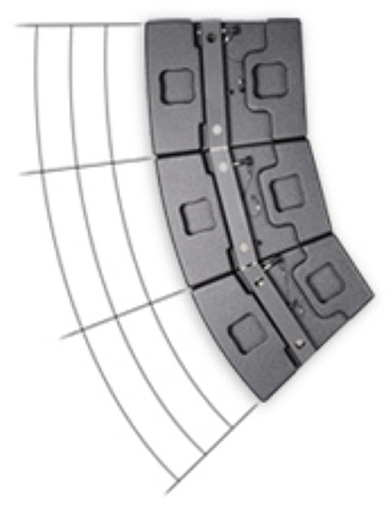
A proprietary Tuned Conic Diverter waveguide improves integration and transition between adjacent cabinets, progressing from 60 to 90 degrees or 90 to 120 degrees, great for tricky applications.
d&b audiotechnik has a unique take on system modularity. For example, the T Series offers rotating horns that can be configured from the outside of the cabinet without any tools. The rotatable waveguide and acoustic lens enables the loudspeaker to easily transform from a line array to point-source box easily. (And no, you don’t even have to take the grill off.)
L-Acoustics has been rightly lauded as the driving force behind the modern line array, as well as for it’s “total system” approach. But that’s far from the entire story, as evidenced by the recently introduced ARCS Wide and ARCS Focus boxes that can be configured into a wide variety of systems from a single “speaker on a stick” to a line array to a 360-degree central cluster.
The trapezoidal shape of ARCS enclosures corresponds to their coverage value (15, 22.5, or 30 degrees), making the configuration of appropriate arrays a straightforward proposition.
Going Linear
Meyer Sound turned a lot of heads last year with the debut of the LEO M advanced linear array, which enjoyed a successful early run on a concert tour by Rod Stewart, with Lars Brogaard at the helm (read more about that here). LEO-M is defined by its sonic linearity at high, continuous output levels, so it’s particularly well-suited for long-throw applications.
The high-frequency section is comprised of two proprietary compression drivers coupled to a constant-directivity horn through a patented REM manifold. The manifold’s smooth radiating characteristics afford tight vertical coverage. The low-frequency section includes two long-excursion cone drivers, also proprietary, capable of withstanding high, continuous output levels. Precise phase and magnitude alignment between the low-and high-frequency drivers yields well-behaved horizontal coverage.
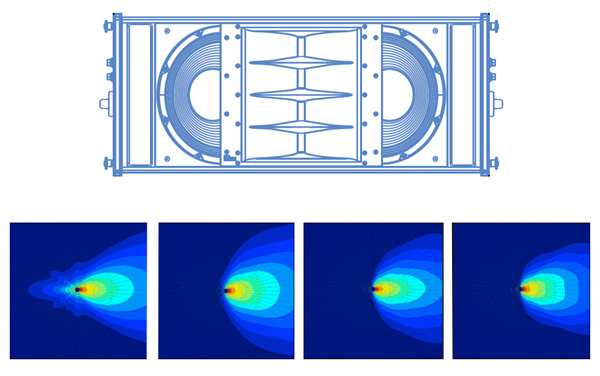
In addition, the cabinet width for LEO-M was designed to be the same as Meyer Sound MICA cabinets so that they can be used for down fill in LEO-M systems. LEO-M arrays can also be easily augmented with the 1100 LFC element for additional low-frequency content. Entire systems can be driven by Meyer Sound’s Galileo Callisto array processor, which provides matrix routing, alignment, and processing for individual array components.
And to insure optimum performance, LEO arrays can be designed with Meyer Sound’s MAPP Online Pro acoustical prediction software, a cross-platform application that accurately predicts coverage patterns, frequency and impulse responses, and maximum peak SPL.
It’s been interesting to watch Adamson Systems roll out it’s Project Energia. The E15 line array module has already gained significant traction in the touring world, built around the e-capsule, a surrounding module constructed in aircraft grades of lightweight aluminum.
This skeletal structure provides an accurate and rigid frame for mounting the modular rigging system while also housing a series of mid/high components on proprietary Co-Linear Drive Modules. The e-capsule is flanked with two separate birch ply enclosures, each containing a proprietary Kevlar 15-inch woofer with the company’s Advanced Cone Architecture.
Another attractive package, which made it’s debut at the NAMM show, is the D.A.S. Audio Aero 40A line array. The transducer line-up in particular looks quite interesting, starting with a rear-loaded 12-inch transducer in a bass-horn configuration for low-end reproduction.
The mid-range is handled by a new 8-inch transducer/horn assembly developed specifically for the Aero 40A. The new BM-8905 horn integrates a phasing plug to enhance acoustic coupling between adjacent units.
High frequency reproduction relies on two D.A.S. M-75N compression drivers attached to a new BPS-2912 waveguide.
Martin Audio has earned attention with its MLA (Multi-cellular Loudspeaker Array) technology found in a large-format array approach, and more recently, in the MLA Compact. Each box in an array has six channels of amplification, DSP and digital networking that control the lows, each mid, and each high frequency component separately. A software interface provides control of each channel (or “cell” as Martin calls them), helping the sound team put output where they want it and away from where they don’t.


